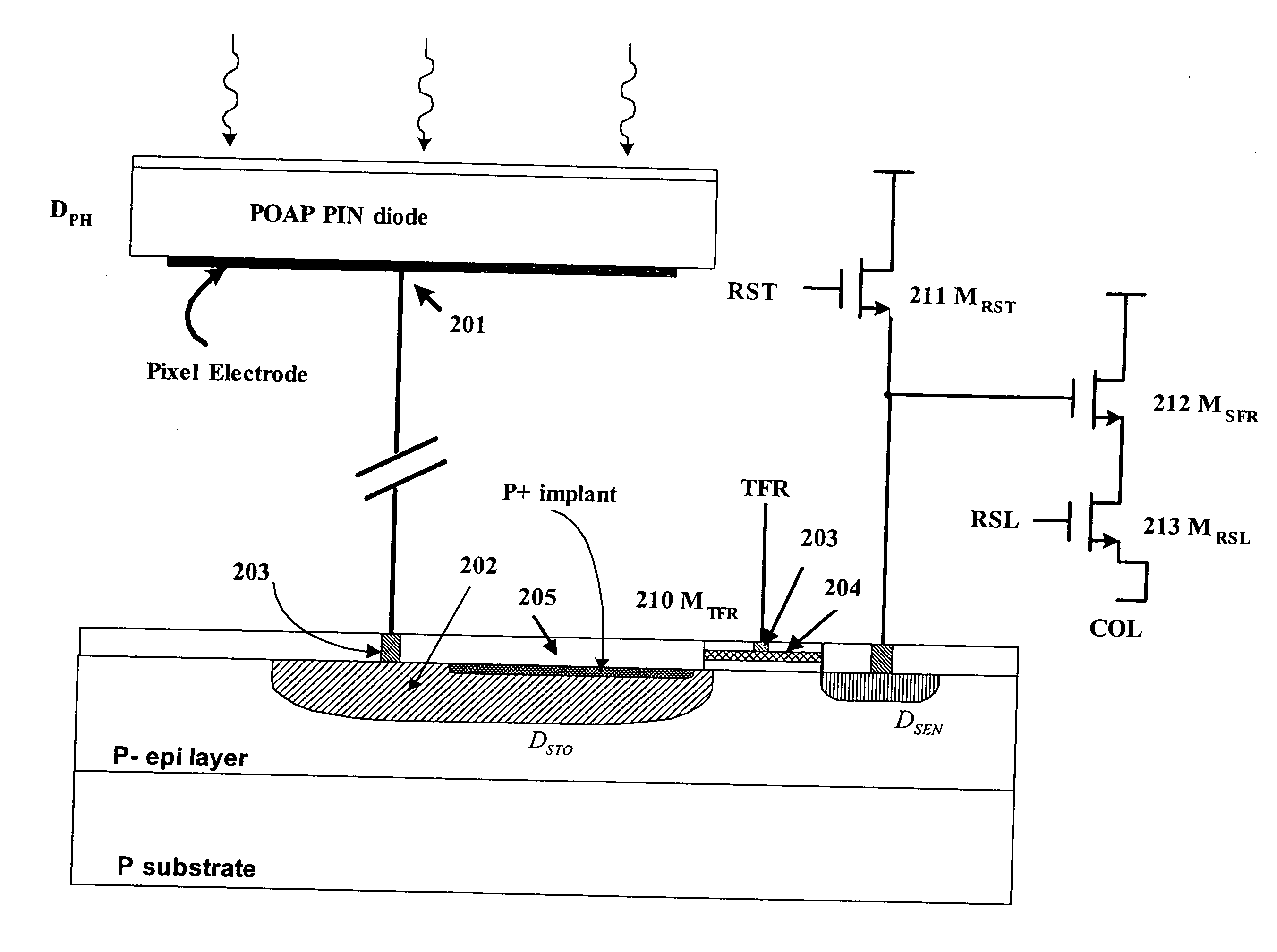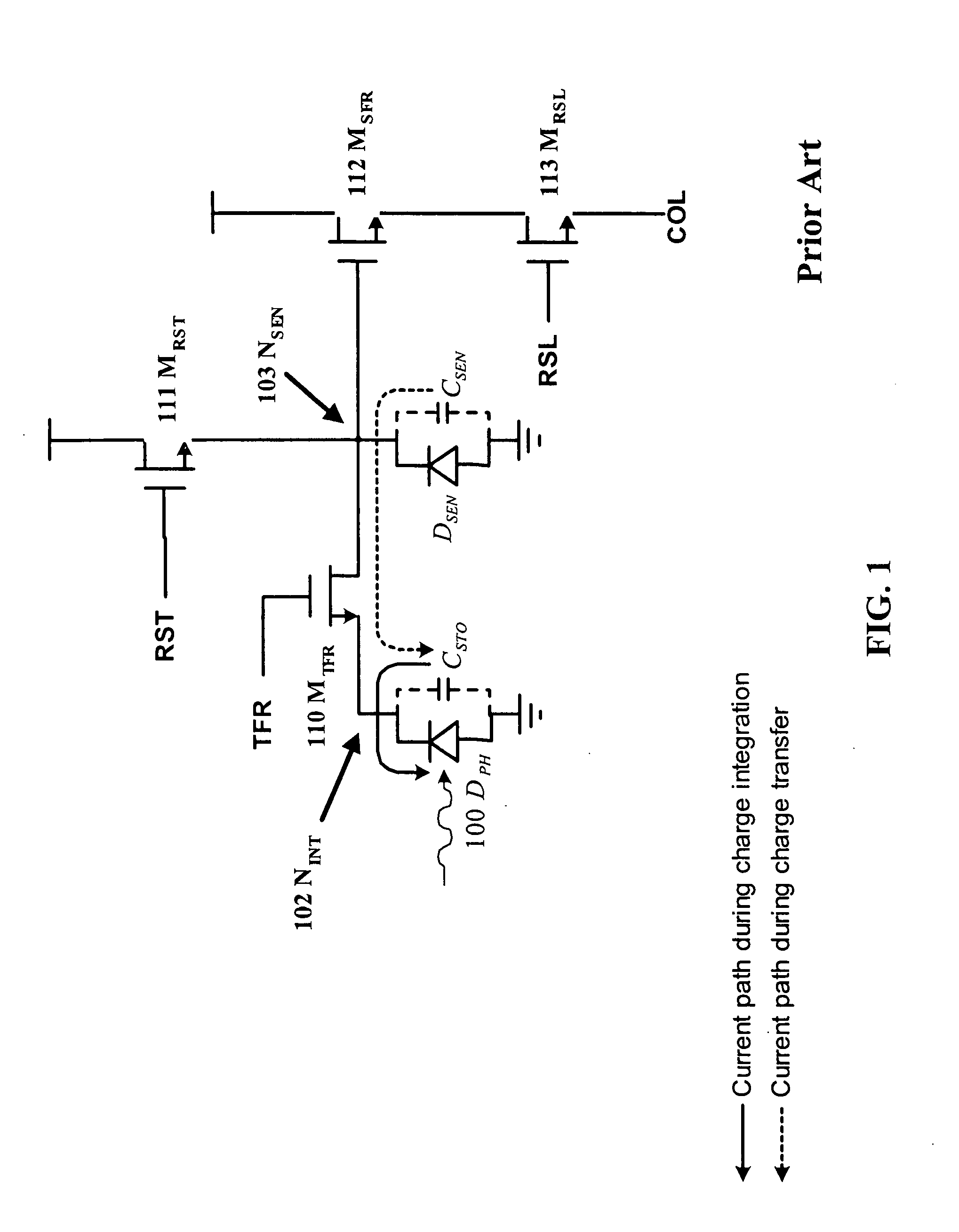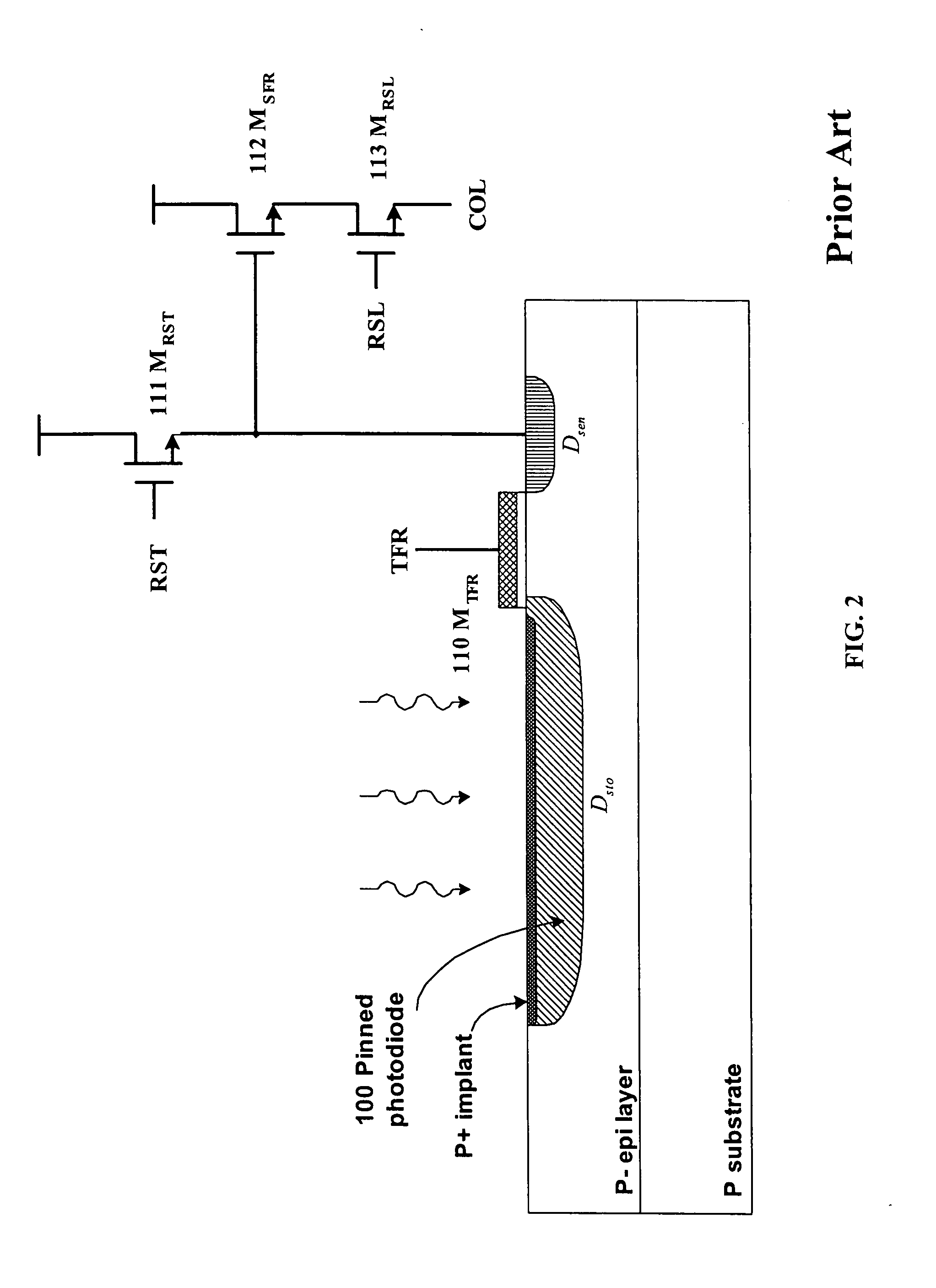CDS capable sensor with photon sensing layer on active pixel circuit
a photon sensing layer and sensor technology, applied in the field of cmos sensors, can solve the problems of incomplete charge transfer, inability to fabricate the travel path in real practice, etc., and achieve the effect of fine tuning the overall sensor performance, eliminating clock noise, and eliminating clock nois
- Summary
- Abstract
- Description
- Claims
- Application Information
AI Technical Summary
Benefits of technology
Problems solved by technology
Method used
Image
Examples
Embodiment Construction
First Preferred Embodiment—Five Transistor Design
[0031] A first preferred embodiment of the present invention is shown in FIG. 4 and FIG. 5. This embodiment combines features of the prior art POAP technology, pinning technology and correlated double sampling, all discussed in the background section to provide a sensor with approximately 100 percent packing factor and substantially zero clock noise. The result is a sensor with approximately 100 percent improvement in sensitivity over typical prior art CMOS sensors and a 40 percent improvement over prior art POAP sensors.
Pixel Structure
[0032] As shown if FIG. 5 a first preferred embodiment includes a four layer POAP type photodiode 300 covering all pixels in the pixel array. The four layers are an n-doped layer 302, an intrinsic i-layer 304, a p-doped layer 306 and an indium-tin-oxide (ITO) layer 308. The POAP structure also includes an electrode 310 for each individual pixel in the pixel array. A silicon oxide insulating layer 22...
PUM
 Login to View More
Login to View More Abstract
Description
Claims
Application Information
 Login to View More
Login to View More - R&D
- Intellectual Property
- Life Sciences
- Materials
- Tech Scout
- Unparalleled Data Quality
- Higher Quality Content
- 60% Fewer Hallucinations
Browse by: Latest US Patents, China's latest patents, Technical Efficacy Thesaurus, Application Domain, Technology Topic, Popular Technical Reports.
© 2025 PatSnap. All rights reserved.Legal|Privacy policy|Modern Slavery Act Transparency Statement|Sitemap|About US| Contact US: help@patsnap.com



